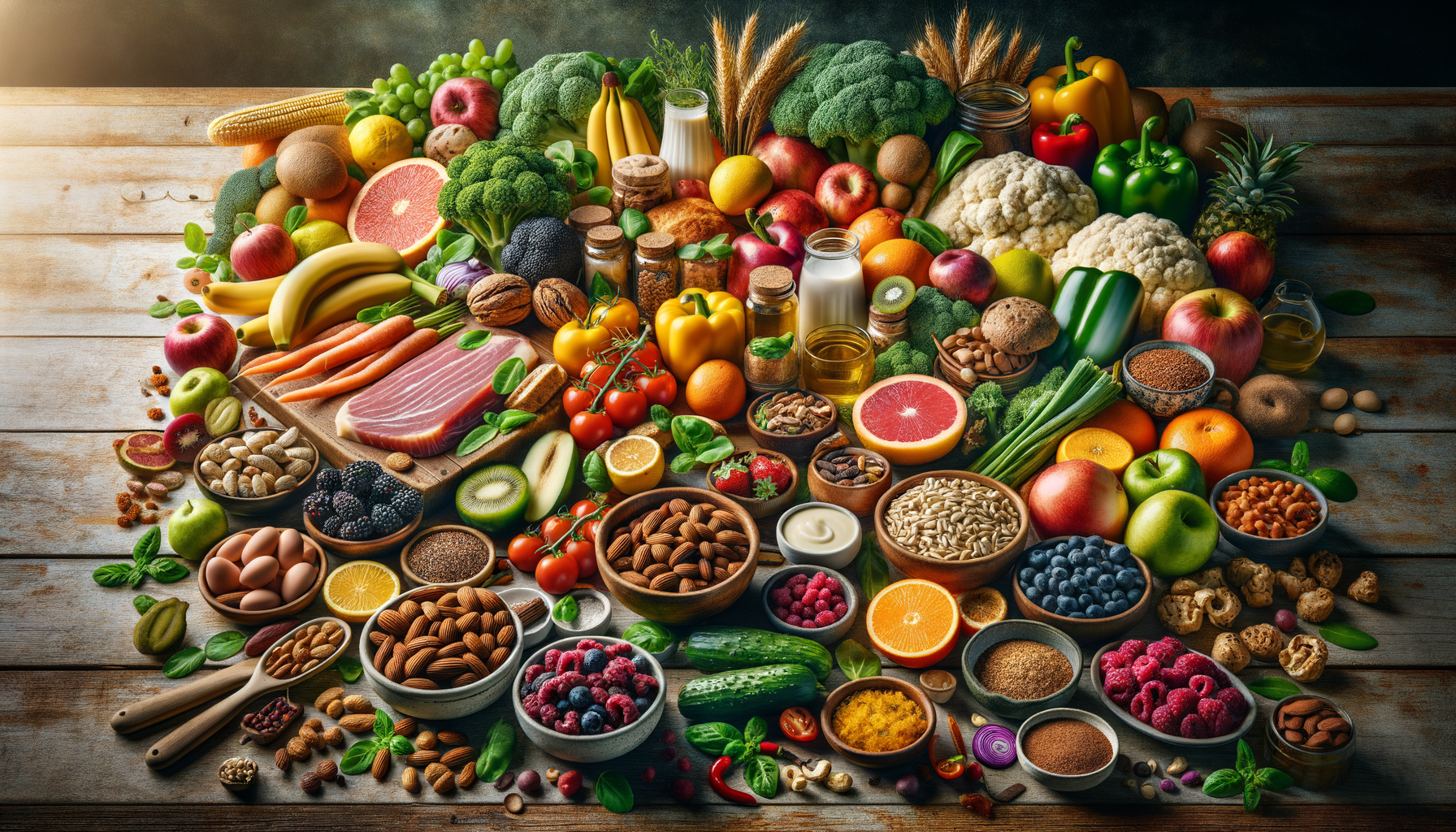
Nourishing Choices: Exploring the World of Healthy Food
Understanding the Basics of Healthy Eating
Healthy eating is a cornerstone of well-being, providing the necessary nutrients to support bodily functions. At its core, healthy eating involves consuming a variety of foods that are rich in essential nutrients such as vitamins, minerals, proteins, carbohydrates, and fats. The key to a balanced diet is moderation and variety, allowing for the inclusion of different food groups to meet nutritional needs.
Whole foods, such as fruits, vegetables, whole grains, lean proteins, and healthy fats, form the foundation of a nutritious diet. These foods are minimally processed, retaining their natural nutrients, and are often lower in added sugars, sodium, and unhealthy fats. For instance, opting for whole grains over refined grains can significantly boost fiber intake, aiding digestion and maintaining stable blood sugar levels.
Incorporating a variety of colors on your plate is a simple yet effective strategy to ensure a wide range of nutrients. Each color represents different phytonutrients and antioxidants, which play roles in preventing chronic diseases and supporting overall health. By embracing the diversity of whole foods, individuals can create a balanced diet that supports both physical and mental well-being.
The Role of Fruits and Vegetables in a Healthy Diet
Fruits and vegetables are powerhouses of nutrition, offering an array of vitamins, minerals, and antioxidants essential for health. They are naturally low in calories and high in fiber, making them an excellent choice for weight management and digestive health. The dietary guidelines recommend filling half of your plate with fruits and vegetables to maximize health benefits.
Each type of fruit and vegetable offers unique health advantages. For example, leafy greens like spinach and kale are rich in iron and calcium, supporting bone health and oxygen transport in the body. Berries, such as blueberries and strawberries, are packed with antioxidants that combat oxidative stress and inflammation.
Moreover, fruits and vegetables contribute to hydration due to their high water content. This is particularly beneficial in maintaining skin health and supporting kidney function. Including a variety of these plant-based foods not only enhances nutritional intake but also adds vibrant flavors and textures to meals, making healthy eating both enjoyable and satisfying.
Understanding Proteins: Building Blocks of the Body
Proteins are essential macronutrients that play a critical role in building and repairing tissues, producing hormones, and supporting immune function. They are composed of amino acids, some of which the body cannot produce and must be obtained through diet. A healthy diet includes a variety of protein sources to ensure all essential amino acids are consumed.
Animal-based proteins, such as poultry, fish, and dairy, are complete proteins, providing all essential amino acids. Meanwhile, plant-based proteins, like beans, lentils, and quinoa, are excellent sources of protein and are often accompanied by fiber and other beneficial nutrients. Combining different plant proteins, such as rice and beans, can also provide a complete amino acid profile.
Incorporating a mix of protein sources in your diet not only meets nutritional needs but also supports environmental sustainability. Plant-based proteins generally have a lower environmental impact compared to animal-based proteins, making them a sustainable choice for the planet. Balancing protein intake with other food groups ensures a well-rounded diet that supports muscle health and overall vitality.
The Importance of Healthy Fats
Fats are an essential part of a balanced diet, providing energy, supporting cell growth, and aiding in the absorption of fat-soluble vitamins. However, not all fats are created equal. Healthy fats, such as monounsaturated and polyunsaturated fats, are beneficial for heart health and can be found in foods like avocados, nuts, seeds, and olive oil.
Omega-3 fatty acids, a type of polyunsaturated fat, are particularly important for brain health and reducing inflammation. Sources include fatty fish like salmon and mackerel, as well as flaxseeds and walnuts. Incorporating these fats into your diet can help lower the risk of heart disease and support cognitive function.
Conversely, trans fats and excessive saturated fats can raise cholesterol levels and increase the risk of cardiovascular disease. These are often found in processed foods and should be consumed in moderation. By choosing healthy fats and balancing their intake with other macronutrients, individuals can support heart health and maintain a healthy weight.
The Impact of Whole Grains on Health
Whole grains are an integral part of a healthy diet, offering a rich source of fiber, vitamins, and minerals. Unlike refined grains, whole grains retain all parts of the grain kernel, including the bran, germ, and endosperm, which contribute to their nutritional profile. Consuming whole grains has been linked to a reduced risk of chronic diseases, such as heart disease, type 2 diabetes, and certain cancers.
Examples of whole grains include brown rice, quinoa, oats, and whole wheat bread. These grains provide complex carbohydrates that release energy slowly, helping to maintain stable blood sugar levels and providing sustained energy throughout the day. The high fiber content also promotes digestive health by supporting regular bowel movements and preventing constipation.
Incorporating whole grains into meals can be simple and delicious. Swapping refined grains for whole grains in recipes or exploring new grains like farro or bulgur can add variety and nutritional benefits to your diet. By making whole grains a staple, individuals can enhance their overall health and enjoy a diverse array of flavors and textures.